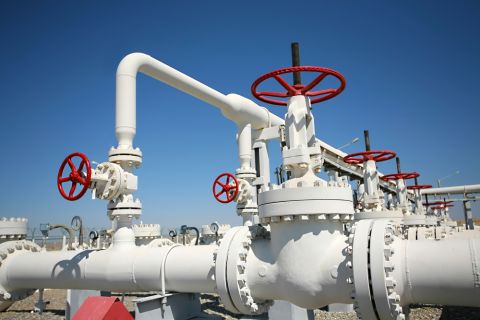Major oil industry producers and traders are forecasting a bleak future for worldwide fuel demand, due to the coronavirus pandemic's ongoing assault on the global economy.
The novel coronavirus hammered fuel demand in the spring, causing consumption to drop by more than one-third as billions of people worldwide restricted their movements. Consumption rebounded in the summer, but some countries where infections were under control are seeing a resurgence in the deadly virus, sparking waves of lockdowns that could hamper the recovery.
"Risks remain elevated and skewed to the downside, particularly in relation to the development of COVID-19 infection cases and potential vaccines," said OPEC, in its monthly report released on Sept. 14.
The virus has infected more than 29 million people, with roughly 925,000 deaths in roughly nine months, according to Reuters data. Several companies are working on a vaccine, but it is likely months away from mass distribution, and it is unclear how effective any vaccine will be in preventing future outbreaks.
OPEC cut its outlook for demand in 2020, saying world oil demand would fall by 9.46 million bbl/d this year, an increase of 400,000 bbl/d from its previous report. It cut its outlook for Asian countries beyond China.
Global prices were walloped in April, with U.S. crude futures falling at one point through negative-$40/bbl. Prices of both U.S. crude and Brent recovered, but both are now trading at less than $40, due to the weak rebound in demand.
"As economies around the world opened up, there was optimism and enthusiasm that we would just head back to normal over some period of time," said Andrew Lipow, president of Lipow Oil Associates.
"What we're seeing now is that there's more pessimism because we're seeing a resurgence of the virus around the world," Lipow said.
Energy giant BP Plc, in its 2020 outlook released on Sept. 14, projected in its base-case scenario that oil consumption peaked for good last year due to the health crisis, and that coronavirus could slash oil demand by about 3 million bbl/d by 2025 and by 2 million bbl/d by 2050.
Vitol CEO Russell Hardy sounded a more positive note, telling a global petroleum conference in Singapore that oil demand in transportation sectors, with the exception of jet fuel, could return to pre-pandemic levels by the fourth quarter of 2021. That could help drain a surge of inventories, which grew by roughly 1.2 billion barrels in tanks and in water storage, Hardy said.
"The market is slowly chewing through that excess inventory," he said, adding that about 300 million barrels have been drawn down from this year's peak.
Refiners worldwide have been cutting processing due to weak overall demand and an abundance of crude. In the U.S., product supplied over the past four weeks has been 16% below the same time period a year ago, according to U.S. Energy Department figures.
A dent in demand caused by a continuing rise in cases or a second wave presents "the most likely shock that the oil market needs to be considering in the next 12 to 24 months," said Vitol's global head of research, Giovanni Serio.
The International Energy Agency (IEA) is set to update its projections for global oil demand in its monthly report due on Sept. 15, after an IEA official said this month that the market appeared to be stuck between a stalled recovery and the absence of any major new lockdowns.
Recommended Reading
Ozark Gas Transmission’s Pipeline Supply Access Project in Service
2024-04-18 - Black Bear Transmission’s subsidiary Ozark Gas Transmission placed its supply access project in service on April 8, providing increased gas supply reliability for Ozark shippers.
Kinder Morgan Sees Need for Another Permian NatGas Pipeline
2024-04-18 - Negative prices, tight capacity and upcoming demand are driving natural gas leaders at Kinder Morgan to think about more takeaway capacity.
Scathing Court Ruling Hits Energy Transfer’s Louisiana Legal Disputes
2024-04-17 - A recent Energy Transfer filing with FERC may signal a change in strategy, an analyst says.
Balticconnector Gas Pipeline Will be in Commercial Use Again April 22, Gasgrid Says
2024-04-17 - The Balticconnector subsea gas link between Estonia and Finland was damaged in October along with three telecoms cables.
Targa Resources Ups Quarterly Dividend by 50% YoY
2024-04-12 - Targa Resource’s board of directors increased the first-quarter 2024 dividend by 50% compared to the same quarter a year ago.




